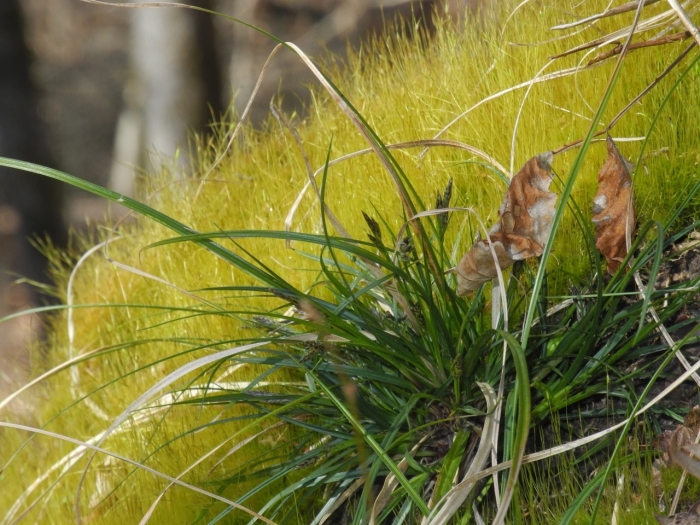Fibrousroot Sedge
(Carex communis)
Fibrousroot Sedge (Carex communis)
/
/

Michael J. Papay
CC BY 4.0
Image By:
Michael J. Papay
Recorded By:
Copyright:
CC BY 4.0
Copyright Notice:
Photo by: Michael J. Papay | License Type: CC BY 4.0 | License URL: http://creativecommons.org/licenses/by/4.0/ | Rights Holder: Michael J. Papay | Publisher: iNaturalist | Date Created: 2021-03-07T09:59:51-08:00 |

















































Estimated Native Range
Summary
Carex communis, commonly known as Fibrousroot Sedge, is a deciduous perennial herb native to moist meadows, wetlands, and forested wetlands in the Eastern USA and Southeast Canada. It typically grows to a height of 1-2 feet (0.3-0.6 meters) and a width of 0.8-1 feet (0.2-0.3 meters). This sedge forms dense clumps of narrow, grass-like leaves and produces inconspicuous greenish-brown flower spikes in late spring to early summer. The plant is not known for showy flowers but adds a fine-textured element to the garden.
Fibrousroot Sedge is valued for its ability to thrive in wet conditions and is often used for soil stabilization and erosion control in moist to wet areas of the landscape. It is suitable for rain gardens, water features, and naturalized areas where it can form a ground cover. Carex communis prefers partial shade but can tolerate full sun if sufficient moisture is available. It requires consistently moist to wet soils with good drainage. While generally low-maintenance, it can spread by rhizomes and may need to be managed to prevent unwanted naturalization.CC BY-SA 4.0
Fibrousroot Sedge is valued for its ability to thrive in wet conditions and is often used for soil stabilization and erosion control in moist to wet areas of the landscape. It is suitable for rain gardens, water features, and naturalized areas where it can form a ground cover. Carex communis prefers partial shade but can tolerate full sun if sufficient moisture is available. It requires consistently moist to wet soils with good drainage. While generally low-maintenance, it can spread by rhizomes and may need to be managed to prevent unwanted naturalization.CC BY-SA 4.0
Plant Description
- Plant Type: Grass, Grass
- Height: 1-2 feet
- Width: 0.8-1 feet
- Growth Rate: Moderate
- Flower Color: N/A
- Flowering Season: Spring, Summer
- Leaf Retention: Deciduous
Growth Requirements
- Sun: Part Shade, Full Sun
- Water: Medium, High
- Drainage: Fast
Common Uses
Bird Garden, Deer Resistant, Low Maintenance
Natural Habitat
Moist meadows, wetlands, and forested wetlands
Other Names
Common Names: Fibrous-Root Sedge
Scientific Names: , Carex communis, Carex communis f. gynandra, Carex communis var. gynandra,
GBIF Accepted Name: Carex communis L.H.Bailey